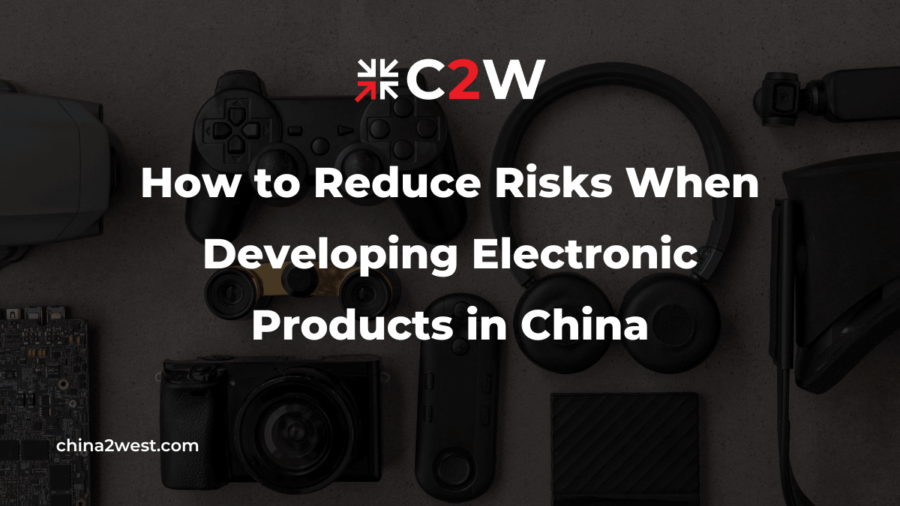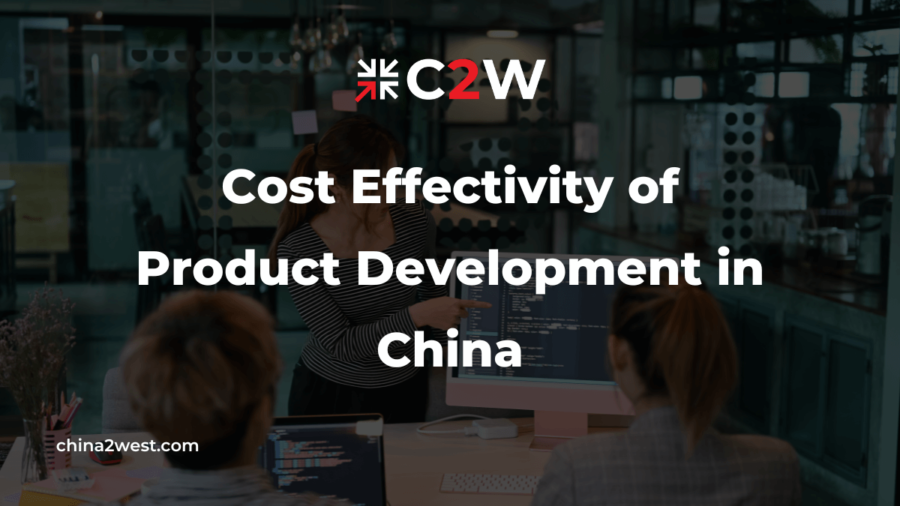Creating and producing a new electronic product can be overwhelming, but having your product designed and manufactured in China can be an effective strategy to reduce costs and ensure high quality. Unfortunately, it doesn’t come without its risks. In the Western world, we have our own set of rules and regulations to follow, but in China, there are multiple sets of rules to follow with each having its own policies and requirements. How do you know what’s required and what isn’t? When should you follow one set of rules and when should you choose another? Here are some tips on how to reduce your risks of product development for your electronic products in China.
Why you should consider product development in China
You can take your electronic product from concept, to manufacturing, and into stores or catalogs by working with experienced product development firms or suppliers with adequate expertise on product development that offer all of these services. By choosing a firm that specializes in electronic products (rather than general product development), you will be able to reduce risks associated with obtaining approval for export, transportation costs, and quality. You’ll also benefit from assistance related to production costs and material sourcing; both are factors that many businesses overlook but are essential components of a successful product line. By working with a local partner firm in China, you’ll also have instant access to human resources who can provide valuable insight into the Chinese markets. The bottom line: Working with an experienced firm means reduced risk of delays and increased revenue from successful products produced by experienced manufacturers.
What are the risks?
On a global scale, it’s difficult for first-time product developers to navigate both foreign cultures and unfamiliar terrain. After all, China can be very complicated. Understanding how risk affects your project is important before you begin, whether that means moving forward with caution or all-out preparing for problems. Here are some things you need to consider when developing electronic products in China.
- Is your team trustworthy?
- Do they have experience?
- Are they able to communicate effectively? If not, do you have someone who can help translate and act as an intermediary?
It’s also good to know if anyone on your team has any connections—and if so, how deep those ties go. The more knowledge about Chinese culture and business practices your team has, the better off you will be during development. (Note: This applies even if you’re working with an outside company.)
How to reduce risks?
So much experience from the western businesses in China has contributed thoughts on how to reduce risks when developing your electronic products in China. Before you get started on reducing risk while manufacturing your electronic product (or any other product) from a factory in China, please be aware that there is no real way of completely reducing all risks. As far as human beings are concerned, we are error-prone by nature. We’re not even going to suggest that you can eliminate errors and mistakes altogether because that simply isn’t realistic or even possible.
What you need to do instead is take steps to minimize them. In fact, it’s quite easy for those with little experience in China manufacturing to make some very simple mistakes which end up costing them money. The best way around that is to learn about what could go wrong before it happens so that you can avoid making those same mistakes yourself. Here are some tips.
Keep track of your product development process
It may sound like an obvious point but many companies who develop their products in China fail to keep track of their product development process correctly and it costs them dearly later on down the line. By taking notes every time you have a meeting with one of your suppliers, manufacturers or quality control specialists, you’ll quickly find out where things start going wrong if they do indeed start going wrong at all. If they don’t go wrong at all then that’s fine too!
Do your research
If you want to develop a new type of electronic product from scratch then why not consider outsourcing some of the research involved? Many people think that doing research yourself is more cost effective than outsourcing but in reality that’s often not true. There are many companies out there who specialize in developing products and they can do it for less money than you can, especially if you’re paying for all of their equipment and overheads as well. It also helps to have an expert on hand who knows exactly what they’re talking about when it comes to developing electronic products because they’ll be able to tell you whether or not your idea is feasible or whether it will work at all. They’ll also be able to give good advice on how best to proceed with development, which saves time and money further down the line.
Start with a Product Specification Document (PSD)
Before developing a product in China, it’s important to have one central document that outlines all of your design parameters. This is called a Product Specification Document or PSD. A PSD lists every component and specification you want incorporated into your product, from power output and operating frequency to size and color. The PSD should also detail what you’re willing to pay for each component, along with a detailed timeline of when you want those components delivered by manufacturers. It helps establish clear timelines, reduces miscommunication among manufacturers and ensures that everything goes according to plan during development. Without a PSD, there are many more opportunities for delays and misunderstandings. And delays cost money—and time isn’t on your side if you’re trying to get a product out before competitors do.
Check for Credentials
Product safety is always a prioritized concern when it comes to electronic manufacturing, especially for battery-operated items like cellphones. Not only can a dangerous product result in huge financial loss and large-scale class action lawsuits, but also its disastrous and irreparable lasting impacts on the reputation and public trust. The recent case of the Fitbit recall and the Samsung battery explosions in 2017 have proved the point, and they all boiled down to a small defect related to certification. We know no one can be easily reassured for something so critical to your business. That’s why always make sure inquire about your manufacturers’ certifications, such as FCC(Federal Communication Commission), CE(Conformitè Europëenne, EU safety requirement), RoHS(Restriction of Certain Hazardous Substances), etc. Our technologies evolve so fast that their regulations and rules can be changed constantly.
Don’t Ignore Shipping Costs
Shipping is one of your largest expenses, but it is not always calculated into the cost of goods. Once you have a few quotes from manufacturers, try checking with FedEx and UPS for shipping quotes from both Chinese and American ports. You might be surprised at how much more expensive ocean shipping can be compared to air shipments.
Incorporate Budget for Failure
Design and manufacturing processes aren’t perfect, even if you have an experienced team on your side. It’s good practice to add 5% – 10% extra to your budget for unexpected costs like re-tooling or scrapping a whole batch because of quality issues.
Make Sure Your Product Is Unique
There are countless products being developed every day in China, so make sure yours has some special features that will set it apart from competitors. If you don’t think there’s anything special about what you’re developing, take another look at your design and development process.
While product development is certainly a challenging endeavor, you can make the process easier by following the right steps beforehand. This manual tells you what to do and what not to do in order to get your new product off the ground.
With our product development services, we will ensure that your new product is as successful as possible in this competitive world. Contact us today for a consultation about your potential product!


